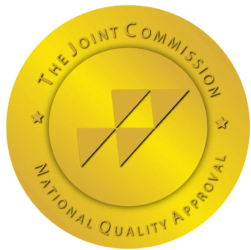We’d all like to think that we live in a more enlightened time, but the unfortunate truth is that racism is still rampant. This is true everywhere you look – among employers, law enforcement, your everyday man on the street – and one place that it’s becoming increasingly apparent is in public response to substance abuse trends. If you look at media coverage of drug addiction, or even at the policies the government enacts to address it, you’ll find a racial disparity.
According to a report by the National Cancer Institute (NCI) in the Annals of Internal Medicine, there has been a significant increase in cocaine-related overdoses among black Americans. The authors used data from death certificates to examine overdose death rates from 2000 to 2003 with data from 2012 to 2015. The results showed that total overdose deaths had increased among blacks (from 6.1 to 9.0 per 100,000 people), Hispanics (4.2 to 6.0), and whites (5.6 to 15.5). The increases were the greatest among older black individuals.
For white people, the most common cause of overdose was opioids, but for blacks it was cocaine. We all know of the measures that have been taken to combat the opioid crisis, including The 21st Century Cures Act passed by Congress in 2016, which allocated $1 billion to address the opioid epidemic. No similar measures have been taken to address alcohol, cocaine, meth, and other drugs.
It’s not just government that seems to overlook the plight of minorities. The media – oft-labeled as liberal though it might be – portrays white and black drug users differently. On Mother’s Day 2018, New York Times Magazine published an article called “Children of the Opioid Epidemic.” The cover featured a white mother with her adorable fair-haired daughter, dressed in a ruffled skirt and aiming big blue eyes at the camera. The article tells us about the mother’s lifelong struggles, her depression and anxiety – some might say making excuses for her. It mentions her intelligence, her dreams, her humanity. All in all, it’s a hopeful piece. It’s also a far cry from the stories we heard in the 1980s and 90s about “crack babies.”
Even the Times wasn’t immune to the hysteria, publishing an article in 1989 called “Crack’s Toll Among Babies: A Joyless View.” It uses words like subnormal and devotes much of its time to discussing how children born to mothers who used crack and cocaine in our nation’s inner cities (which was a way of indicating that they were black without coming right out and saying it) couldn’t so much as play with toys properly. It lamented the fact that many of the first wave of crack babies would be starting school soon, as though to suggest they were already doomed. The Washington Post published a column that same year suggesting that “these mothers don’t care about their babies and they don’t care about themselves.”
Of course, journalism has progressed beyond that, even if minorities still don’t get equal coverage, nor do the drugs that tend to plague them. Maybe it’s simply that drugs weren’t on middle America’s radar until the opioid crisis brought it into our living rooms every day on the nightly news. Or maybe there is still lingering racism at the heart of it. Either way, both our public discourse and our policy need to acknowledge the gap that remains.
If you or a loved one need help with quitting drugs or alcohol, consider Asana Recovery. We offer medical detox, along with both residential and outpatient programs, and you’ll be supervised by a highly trained staff of medical professionals, counselors, and therapists. Call us any time at (949) 438-4504 to get started.





